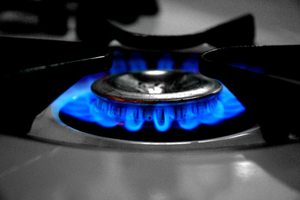 MD of Kenya Pipeline (KPC), Joe Sand said that the company has plans to build facilities worth $125m to handle and store liquefied-petroleum-gas (LPG) with a view to boosting cooking-gas use in the rapidly urbanizing nation.
MD of Kenya Pipeline (KPC), Joe Sand said that the company has plans to build facilities worth $125m to handle and store liquefied-petroleum-gas (LPG) with a view to boosting cooking-gas use in the rapidly urbanizing nation.
The government in East Africa’s biggest economy has scrapped VAT on cooking gas and subsidized the cost of 6kg cylinders in a bid to make the fuel more attractive and affordable for its citizens. For city dwellers, LPG is more convenient and currently, 30% of Kenyans live in urban areas.
According to World Bank, the total number of people living in towns is expected to quadruple by 2045.
“It will largely improve the current, inadequate LPG supply, distribution and storage infrastructure, as well as increased utilization of clean energy,” Sang said in an e-mailed response to questions.
Kenya’s monthly LPG consumption ranges from 15,000 to 23,750 tonnes, according to the Energy Regulatory Commission. The government wants to increase usage to 15kg a person by 2030 from about 4kg currently.
State-owned KPC is evaluating bids for the building of the plants, one in the capital, Nairobi, and the other in Kenya’s second-biggest city,
Mombasa. Construction is set to begin in October and the facilities will be ready by the end of December 2020, Sang said.
The $65m depot in Mombasa will have the capacity to store 25,000 tonnes of gas, rail and truck loading, and bottling facilities. The company has plans to increase the storage capacity once the plant is operational to meet regional demand from land-locked economies including Rwanda and Uganda.
Nairobi’s $60m plant will have the capacity to store 10,000 tonnes of gas, and equipment to refill cylinders. The facilities will be Kenya’s first publicly owned cooking-gas terminals and will secure availability and stability of supplies for the region, as well as diversify KPC’s revenue sources, Sang said.
Commission director-general Pavel Oimeke said that a publicly owned common-user manifold will help with price-setting for retail gas as the facility
will allow for an open-tender system for LPG purchases similar to petroleum products.
African Gas and Oil, a closely held company, has operated Kenya’s biggest LPG terminal, a 14,000-tonne plant in Mombasa, since 2012. Oil marketers including Libya Oil Kenya, Total Kenya, Hashi Energy, Vivo Energy Kenya and National Oil also own smaller storage and bottling plants.
KPC may seek financing from development institutions to fund the plants, though it has yet to settle on the funding mix for the project, Sang said. There’s growing investor appetite for projects that burnish environmental credentials while also giving a yield.
While LPG is derived from fossil fuels, it’s preferable in the country where forest cover is receding from logging for charcoal and firewood.
According to the countries environment ministry, Kenya’s forested area is 7.3% against the recommended 10%.
